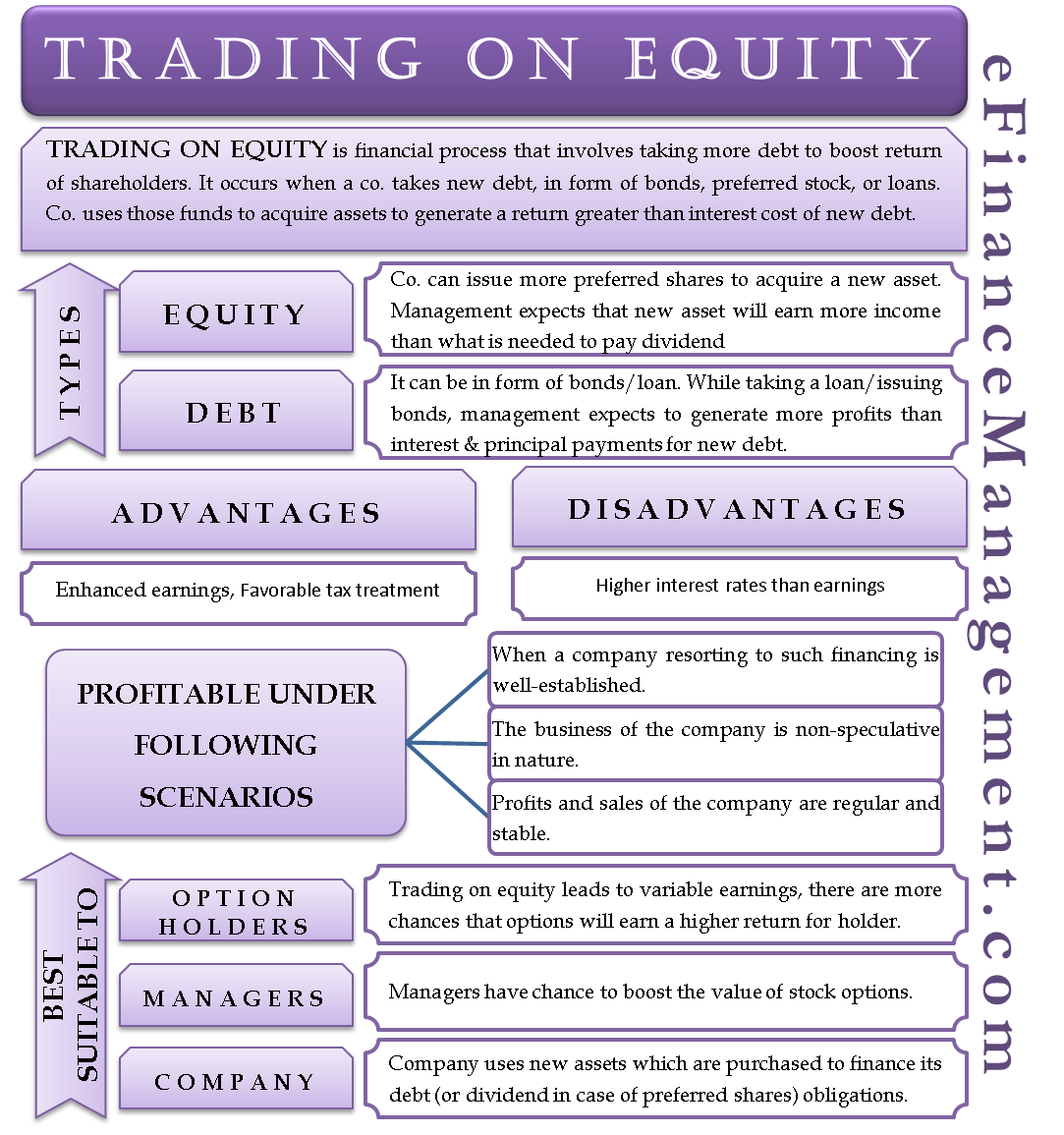
So you have the number now, but the ratio by itself doesn’t really mean anything. Just because shareholders own 80% of the company’s equity doesn’t necessarily mean that’s good; it might be terrible if the other companies in the industry tend to have equity-to-asset ratios around 90%. This is where investing gets tricky — there are lots of ratios like this where you have to calculate the number not only for your company, but also for other companies like it.
Understanding the Asset to Equity Ratio
They use the equity ratio to determine a company’s financial strength, solvency, and risk level. Additionally, lenders often apply constraints or covenants stipulating a company to maintain certain financial ratios, failure of which can lead to a default situation. Therefore, if a company’s equity ratio deteriorates due to bad performance or excessive borrowing, it risks breaching such covenants. Hostess’s equity ratio is 0.40 or 40%, meaning that the company has financed 40% of its assets using equity and the other 60% with debt. Investors (of money, not calories) do the same thing when they use equity ratio to decide which companies to invest in.
Free Stockopedia editorial direct to your inbox
This means that investors rather than debt are currently funding more assets. 67 percent of the company’s assets are owned by shareholders and not creditors. Tim is looking for additional financing to help grow the company, so he talks to his business partners about financing options. Tim’s total assets are reported at $150,000 and his total liabilities are $50,000.
- If that company faces a period of decreased revenues or increased costs, these commitments can become burdensome, potentially leading to insolvency.
- It may signal a company’s lack of confidence to take on profitable projects, or a lack of access to low-cost financing.
- Conversely, a higher equity ratio signifies efficiently funded asset requirements with little debt.
- One of the ways to improve the equity ratio is by increasing the equity of the company itself.
Influencing Factors on Asset Calculation
This ratio provides insight into how much of a company’s assets are financed by shareholders’ equity as opposed to debt. Understanding this metric is crucial for investors, creditors, and management alike. The equity ratio is a leverage ratio that measures the portion of assets funded by equity. Companies with equity ratio of more than 50% are known as conservative companies. A conservative company’s equity ratio is higher than its debt ratio — meaning, the business makes use of more of equity and less of debt in its funding.
How the Calculation Works
Each industry has its own standard or normal level of shareholders’ equity to assets. Henry, an investor, is planning to invest by buying some of its stocks for the long term. He is smart, so he measures Maxine’s company with different parameters and calculates its asset to equity ratio.

The asset to equity ratio reveals the proportion of an entity’s assets that has been funded by shareholders. The inverse of this ratio shows the proportion of assets that has been funded with debt. For example, a company has $1,000,000 of assets and $100,000 of equity, which means that only 10% of the assets have been funded with equity, and a massive 90% has been funded with debt. The company has then the option to keep a high shareholder-equity ratio or take on debt to lower it and invest in projects to grow using this debt capital. The equity-to-asset ratio is a measure of how much of a company’s assets are owned by investors and how much of a company’s assets are leveraged. This is a really important ratio because you don’t want to be investing in a company that’s doing a lot of heavy borrowing just to stay in business.
In other words, if ABC Widgets liquidated all of its assets to pay off its debt, the shareholders would retain 75% of the company’s financial resources. However, this has to be a calculation you perform while looking at other things, too. A company is generally a mix of good and bad, and you have to decide if the good outweighs the bad after all kinds of numbers are examined, including the equity-to-asset ratio. By using this ratio, companies can evaluate their productivity in using assets that are on hand. Long-term PlanningAdopt a long term perspective when deciding on the capital structure.
At the same time, a company can work on its internal issues and bring its total asset to equity ratio from a high value to a low value by paying off its debts and regulating its cash flows. Consequently, companies with high equity ratios aren’t universally the best investment options since they might follow a risk-averse growth strategy, which may yield lower returns for shareholders. Conversely, companies with lower equity ratios from aggressive growth strategies might carry higher financial how to calculate gross profit margin risk, yet could generate sizable returns. Similarly, variations in business models can greatly affect the equity ratio, making it an unsuitable singular determinant for financial health. Differing operational strategies, like organic growth or leveraging, will have varying impacts on debt and equity levels. Some businesses may adopt a business model that involves debt financing for expansion, while others may prefer to rely on retained earnings or infusion of new equity for growth.
A high equity ratio generally indicates that the company has financed most of its assets through equity, implying a lower level of financial risk, as there are fewer obligations to lenders. When a company has a high equity ratio, it means that a substantial part of the firm’s total assets are funded by the shareholders’ equity. This, in turn, generally implies a low debt ratio, as the company is not heavily reliant on borrowed funds to finance its operations. In other words, all of the assets and equity reported on the balance sheet are included in the equity ratio calculation.
